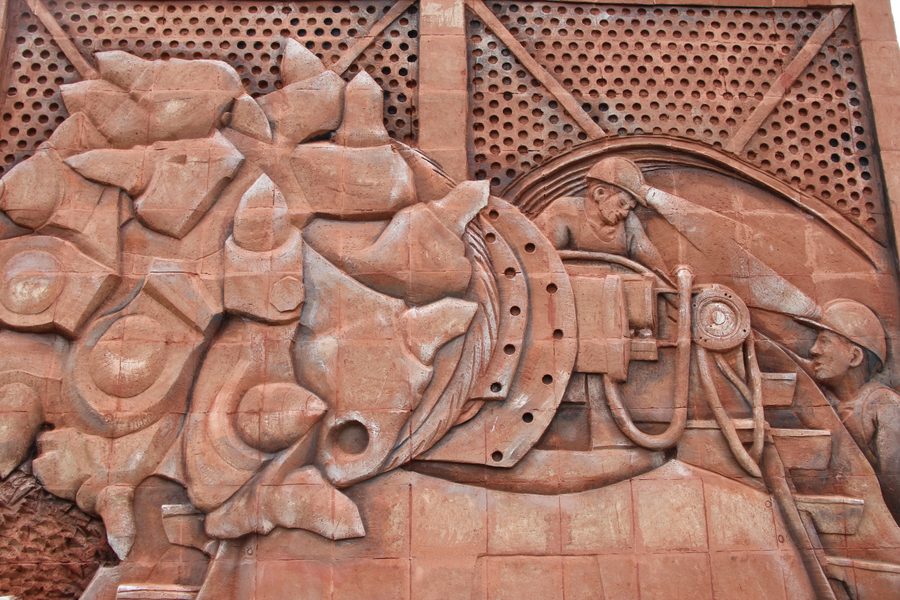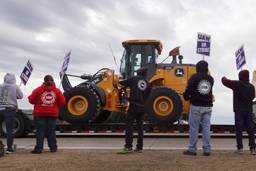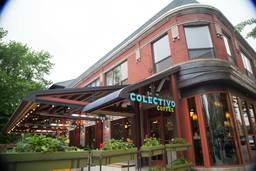
CASTLEFORD, WEST YORKSHIRE — The two elderly women dressed in their Sunday best talked about the “human chain” as if they had seen it yesterday, though it was decades ago. It came about after a man had gotten stuck in a tiny space in one of the underground coal mines that used to be the social and economic foundation of these communities. Eileen Sparks’s father-in-law was among the five rescuers who formed the human chain and lowered themselves into the space, finally pulling the man free at the end of a three-day rescue.
“He came out just like a cork!” Sparks recalls. “And they weren’t paid for those three days, because the mine where the rescue was said ‘You’re not on our books,’ and the mine where they worked said ‘Well you weren’t working here.’ ”
These kinds of memories are still very much alive in British coalfield communities like this, even though almost all of the mines closed two to three decades ago, after a bitter year-long miners strike spurred by then-Prime Minister Margaret Thatcher’s move to break the once-powerful union. Sparks says she remembers the “pit strike” well — she lived in the nearby “terraced houses,” as the densely-packed miners’ homes were known, and “we didn’t get much sleep, the police were always out making so much noise.”
The two women were admiring a monument by local coal miner turned artist Harry Malkin. This monument is on the site of a former coal mine, Allerton Bywater, though if it weren’t for the monument you would never know it, as it is currently occupied by a modern, bright housing development called Horizons Millennium Village.
Malkin’s piece features two coal tubs overflowing with bright flowers emblazoned with the names of the 87 miners who were killed here, as well as those who were laid off when the pit closed in 1992. Behind the tubs is a carved brick replica of the “pit cage” that would lower miners into the depths of the earth, a rectangular box with chains ascending into the sky. Bas-relief images on the cage show mining technology and the National Union of Mineworkers on the march. At night, the monument is bathed in gentle floodlights, luminous. The base is crowded with wreaths of flowers and handwritten heartfelt notes, placed here after a brass band led thousands on a parade and unveiling ceremony the previous week where locals recited the names of the dead.
Like many in this region, Malkin started mining when he was 15, “school-leaving age” as it was known, and spent two decades working underground until the Fryston mine closed shortly after the 1984-1985 strike. For much of his career, Malkin worked on the coal face, often laying in seams less than three feet tall to assemble or repair machinery.
“Looking back now (the mines closing) was the best thing that ever happened to me,” Malkin says. “Mining broke a lot of people.”
While injury and death statistics have dropped drastically as technology has advanced, Malkin doesn’t necessarily see “modern mining” as any safer than the old days. “Now it will just kill you slower,” he said, noting that he knows “blokes who at 35 could hardly breathe” from pneumoconiosis or black lung disease from the thick chocking dust made by the machines. “It’s crazy that blokes fight for jobs like that.”
As a kid, Malkin was always drawing, and after the mine closed, he had a few works in local exhibitions, sold them, “and saw there’s some money in this, I’ll give it a try.” There weren’t many other jobs available. After the strike, he applied at a local coal-fired power plant, “just for a laugh, as after being on strike for a year who is going to hire you!”
Malkin ended up with a studio overlooking the Glass Houghton coal mine, and watched its transformation over the years. “It was amazing, something you never could have imagined. I thought I would finish (mining) at Fryston and die there like many more did,” he said.
Malkin has exhibited throughout England and Wales and has some of his works in other countries, including Russia and Switzerland. He remembers one of his biggest shows on the South Bank, London, just opposite the house of Parliament where “not a bugger there was a miner. One city gent bought five pieces to give his daughter, who spent money like water, to show her what real working people do.”
Malkin vastly prefers the life of an artist to that of a miner. But mining permeates almost all of his works: dusky drawings and paintings of miners hard at work and other monuments and sculptures celebrating the mining industry and heritage of Yorkshire. In a marshy field not far away rises a graceful, whimsical steel fish, which Malkin made from tub wheels, girders and other metalwork used in mines. It is part of the Yorkshire Art Circus’ “Walking on Cold Coal” project that commemorates another now-disappeared mine.
The Yorkshire Art Circus and founder Brian Lewis were key to launching Malkin’s career. Lewis is a poet, teacher and painter who during the mine closures, worked with coalfield residents to help them write a series of books — published and distributed at breakneck speed before the internet made that common — spreading information about the pit closures and describing the human impact.
Another of Malkin’s works commemorates the Athersley pit disaster of 1936, with an eight-foot-high sculpture made from local bricks showing miners looking for survivors after an explosion that killed 59. He also commemorates soldiers killed in Afghanistan and the once-thriving pottery industry in Castleford, the hometown of both Malkin and sculptor Henry Moore, also the son of a coal miner.
Gallery owner Greg McGee was quoted during a 2011 Malkin show, describing his deep understanding of the aesthetics of mining: “Cheeks and eye sockets are ink black, shoulders
are slick crescents, and amidst the trembling chiaroscuro the figures quicken and bristle in their brutal work. Their poise and movements are perfectly calibrated with the instinct and knowledge hewn from many decades’ worth of witnessing and working more than one mile deep underground.”
Malkin shares the view of many former miners that “after the mining union went, the unions have no real power anymore” — the strike and destruction of British coal mining “broke the spirit of the working class.” But unlike other former miners who think Thatcher destroyed a vibrant industry, Malkin believes the mines would have closed eventually anyway, even under a Labour government. He laments that England now gets most of the coal for its power plants and industry from afar — South Africa, Colombia, Russia, even the United States.
Though in places like Castleford the memories of the coal mining days are still very present and monuments like Malkin’s dot the landscape, he is afraid that as the generations pass the legacy will fade away. He notes decreased government funding for the National Coal Mining Museum and the smaller museums and commemorative projects throughout the area. Meanwhile, almost all of the old mining sites have been transformed into new developments like the Horizons residential project.
“Not only do they destroy the industry but try to wipe away all traces of it,” says Malkin. “We’ve got all these museums for the late and great but not museums for the little people. In two or three generations, we might be forgotten completely.”

I hope you found this article important. Before you leave, I want to ask you to consider supporting our work with a donation. In These Times needs readers like you to help sustain our mission. We don’t depend on—or want—corporate advertising or deep-pocketed billionaires to fund our journalism. We’re supported by you, the reader, so we can focus on covering the issues that matter most to the progressive movement without fear or compromise.
Our work isn’t hidden behind a paywall because of people like you who support our journalism. We want to keep it that way. If you value the work we do and the movements we cover, please consider donating to In These Times.
Kari Lydersen is a Chicago-based journalist, author and assistant professor at Northwestern University, where she leads the investigative specialization at the Medill School of Journalism, Media, Integrated Marketing Communications. Her books include Mayor 1%: Rahm Emanuel and the Rise of Chicago’s 99%.







